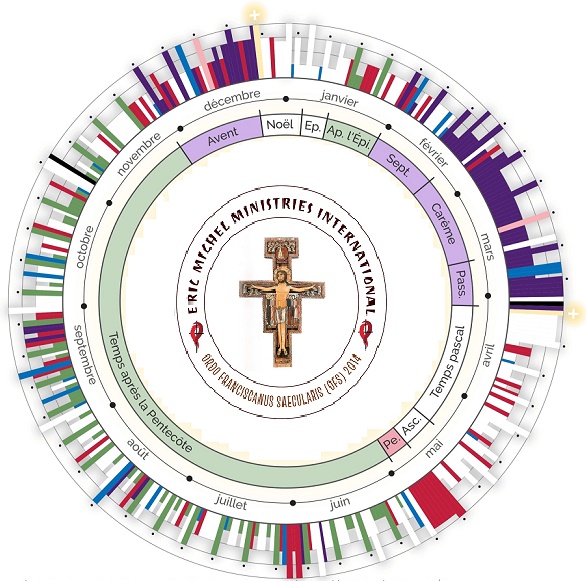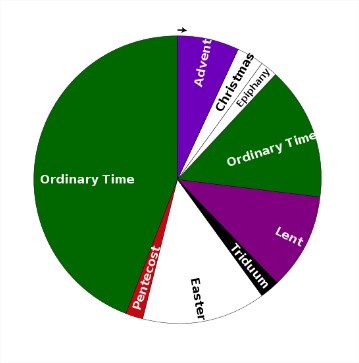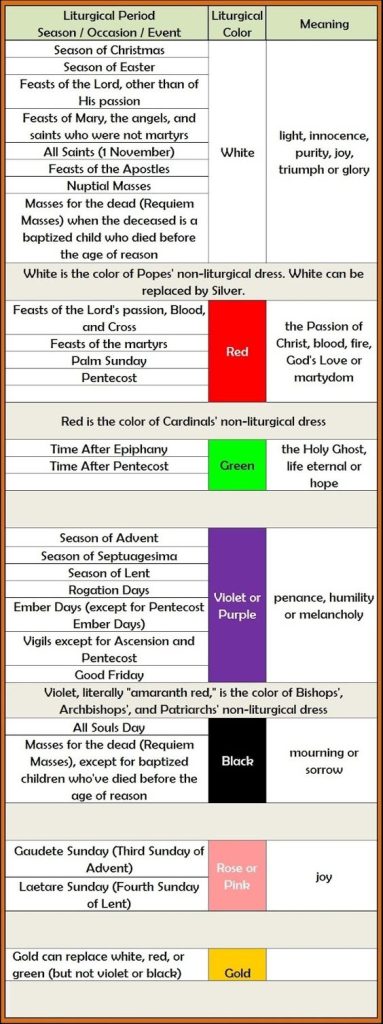Liturgy is the customary public ritual of worship performed by a religious group. As a religious phenomenon, liturgy represents a communal response to and participation in the sacred through activities reflecting praise, thanksgiving, remembrance, supplication, or repentance. It forms a basis for establishing a relationship with God.
Technically speaking, liturgy forms a subset of ritual. The word liturgy, sometimes equated in English as “service”, refers to a formal ritual enacted by those who understand themselves to be participating in an action with the divine.
Catholic liturgy refers to the comprehensive set of official liturgical worship, encompassing all rites, ceremonies, prayers, and sacraments of the Church, as opposed to private or collective devotions. In this sense, the arrangement of all these services in a particular set form (including the canonical hours, administration of sacraments, etc.) is intended. Liturgy encompasses the entire service, including prayer, reading and proclamation, singing, gestures, movement, vestments, liturgical colours, symbols, and symbolic actions, as well as the administration of sacraments and sacramentals.
The Catholic Church understands liturgy not only as the celebration of the Holy Mass, but also as the celebration of the Liturgy of the Hours and the administration of sacraments and many sacramentals.
The Mass is the central liturgical service of the Eucharist in the Catholic Church, in which bread and wine are consecrated and become the body and blood of Christ. As defined by the Church at the Council of Trent, in the Mass, “the same Christ who offered himself once in a bloody manner on the altar of the cross, is present and offered in an unbloody manner”. The Church describes the Mass as the “source and summit of the Christian life”, and teaches that the Mass is a sacrifice, in which the sacramental bread and wine, through consecration by an ordained priest, become the sacrificial body, blood, soul, and divinity of Christ as the sacrifice on Calvary made truly present once again on the altar. The Catholic Church permits only baptized members in the state of grace to receive Christ in the Eucharist.
The Lectionary presents passages from the Bible arranged in the order for reading at each day’s Mass. Compared with the scripture readings in the pre–Vatican II Missal, the modern Lectionary contains a much wider variety of passages, too extensive to include in the Missal. A separate Book of the Gospels, also known as an Evangeliary, is recommended for reading from the Gospels. However, if this book is not available, the Lectionary, which also includes the Gospels, may be used.
The Roman Missal refers to another liturgical book, the Ceremonial of Bishops, saying the norms found in it are to be observed when a bishop celebrates the Mass or presides without celebrating the Eucharist. An English translation was published in 1989.
The Roman Missal also says special celebrations of Mass should observe the guidelines for them. This includes Masses with children, in the “Directory for Masses with Children”, by the Sacred Congregation for Divine Worship, 1 November 1973.
The most frequently celebrated form of the Roman Rite Mass is that in the post–Vatican II editions of the Roman Missal. Authorization for use of the earlier form may be granted by the Holy See or, as indicated in the 2021 document Traditionis custodes, by the diocesan bishop.
Liturgical colours
Liturgical colours are specific colours used for vestments and hangings within the context of Christian liturgy. The symbolism of colours such as violet, blue, white, green, red, gold, black, rose, and others may serve to underscore moods appropriate to a season of the liturgical year or to highlight a special occasion.
There is a distinction between the colour of the vestments worn by the clergy and their choir dress, which, with a few exceptions, does not change with the seasons of the liturgical year.
In the Roman Rite, as reformed by Pope Paul VI, the following colours are used, following the rubrics of the General Instruction of the Roman Missal, Section 346

A simple version:

Roman Latin Rites

The Eric Michel Version

